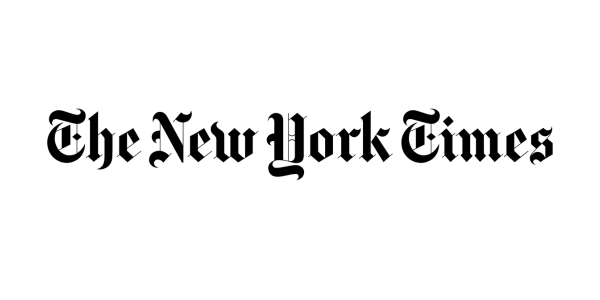In today's fast-paced digital age, the media landscape is constantly evolving and adapting. From traditional forms of media to the rise of social media platforms, the way we consume and engage with information has undergone a remarkable transformation. This blog post aims to take you on a journey through the growth and change of the media landscape, exploring the fascinating shifts in technology, communication, and content creation. Join us as we delve into the history of media, examine the impact of digitalization, and discuss the challenges and opportunities that arise in this ever-changing landscape. Whether you're a media enthusiast or simply curious about the evolving world of communication, this exploration is sure to leave you with a deeper understanding of the remarkable growth and change within the media landscape.
1. The Evolution of Media: A Historical Perspective
The media landscape has undergone a remarkable evolution over the years, experiencing significant growth and change that has shaped the way we consume information and connect with the world around us. To truly understand the current state of media, it is essential to take a step back and explore its historical perspective. In the early days, before the advent of technology, communication primarily relied on traditional mediums such as newspapers, radio, and television. The dissemination of news and entertainment was centralized, with limited options for content and limited control in the hands of the consumers. These traditional media outlets held a monopoly over information, shaping public opinion and influencing societal norms. However, with the rapid advancements in technology, the media landscape has witnessed a dramatic transformation. The rise of the internet and digital media platforms has revolutionized the way information is produced, consumed, and shared. The barriers to entry have significantly lowered, enabling individuals and organizations to become content creators and distributors in their own right. Social media platforms like Facebook, Twitter, Instagram, and YouTube have emerged as powerful tools, democratizing the media landscape and giving a voice to the masses. News can now spread in a matter of seconds, reaching a global audience. Citizen journalism has gained prominence, allowing individuals to report real-time events, breaking news, and share their perspectives. Additionally, the advent of streaming services such as Netflix, Hulu, and Amazon Prime has disrupted the traditional television model, enabling consumers to access a vast array of content on-demand, anytime and anywhere. This shift in consumer behavior has led to the decline of traditional cable subscriptions and the rise of cord-cutting. Furthermore, the rise of mobile technology has further accelerated the evolution of media. Smartphones have become an integral part of our daily lives, providing instant access to news, social media, streaming platforms, and a plethora of other content. This has led to a shift in consumption patterns, with users spending more time on their mobile devices and expecting personalized and immersive experiences. In conclusion, the evolution of media has been characterized by a shift from centralized control to decentralized empowerment, from limited options to an abundance of choices, and from passive consumption to active engagement. Understanding this historical perspective is crucial in navigating the ever-changing media landscape, as it allows us to appreciate the remarkable growth and change that has shaped our modern media ecosystem.
2. The Impact of Digitalization on the Media Landscape
The digital revolution has transformed the media landscape in unprecedented ways. With the rise of the internet and digital technology, traditional media platforms have had to adapt and evolve to keep up with the changing times. The impact of digitalization on the media industry cannot be overstated. It has not only changed the way we consume news and entertainment but has also revolutionized the way media organizations operate and deliver content. One of the most significant impacts of digitalization is the democratization of information. With the internet, anyone can now become a content creator and share their ideas and perspectives with the world. This has given rise to an explosion of user-generated content, social media influencers, and citizen journalism. The traditional gatekeepers of news and information have had to relinquish some of their control as the power to shape narratives has been dispersed among a wider audience. Digitalization has also disrupted the traditional business models of media organizations. The decline of print newspapers and the rise of online advertising have forced publishers to find new ways to generate revenue. Subscription models, paywalls, and native advertising have become common strategies to monetize digital content. Additionally, media organizations have had to invest in digital infrastructure and platforms to meet the demands of an increasingly digital audience. The digital landscape has also brought challenges in terms of trust and credibility. With the proliferation of fake news and misinformation, media consumers now face the daunting task of deciphering between legitimate sources and unreliable ones. This has put a greater emphasis on media literacy and critical thinking skills, as individuals navigate through a sea of information to find the truth. Despite the challenges, digitalization has also opened up new opportunities for media organizations. The ability to reach global audiences, personalize content, and engage directly with consumers through social media has created a more interactive and immersive media experience. Furthermore, data analytics and artificial intelligence have enabled media organizations to gain insights into audience preferences and behavior, allowing for more targeted and effective content delivery. In conclusion, the impact of digitalization on the media landscape has been profound. From changing consumption habits to transforming business models, the digital revolution has reshaped the way media is produced, shared, and consumed. As technology continues to advance, it will be fascinating to see how the media industry continues to adapt and thrive in this ever-evolving digital era.
3. The Rise of Social Media and its Influence on Communication
In the ever-evolving landscape of media, one cannot ignore the remarkable growth and influence of social media on communication. With the advent of platforms like Facebook, Twitter, Instagram, and YouTube, individuals have found themselves at the forefront of a digital revolution, where sharing thoughts, ideas, and stories has become more accessible than ever before. The rise of social media has completely transformed how we connect and interact with others. It has given us the power to share our experiences, opinions, and emotions with a global audience, fostering connections and conversations that were once limited by physical boundaries. We can now engage in real-time conversations, participate in online communities, and even rally for causes that matter to us. The influence of social media on communication cannot be understated. It has reshaped the way news is disseminated, as users now have the ability to be both the creators and consumers of content. Breaking news spreads rapidly through tweets and posts, reaching a wider audience in a matter of seconds. Social media has also given voice to marginalized communities, allowing them to share their stories and experiences, challenging traditional narratives and fostering a more inclusive society. Additionally, social media has become an integral part of marketing and advertising strategies for businesses and brands. It serves as a powerful tool for targeted advertising, engaging with customers, and building brand loyalty. Influencers and content creators have emerged as a new breed of celebrities, with their large followings and ability to sway opinions. However, with great power comes great responsibility. The rise of social media has also brought forth challenges such as the spread of misinformation, invasion of privacy, and the negative impact on mental health. It is crucial for users to navigate these platforms mindfully, being aware of the potential risks and consequences that come with the constant exposure to curated content and the pressure to present an idealized version of oneself. In conclusion, social media has undeniably revolutionized communication, allowing individuals to connect, share, and engage in ways that were once unimaginable. It has democratized the media landscape, empowering users to have a voice and shaping conversations on a global scale. Nonetheless, it is essential to approach social media with awareness and responsibility, ensuring that it remains a positive force for connection and communication in an ever-evolving digital world.
4. Challenges and Opportunities in the Modern Media Landscape
In today's rapidly evolving media landscape, there are both challenges and opportunities that arise for individuals and businesses alike. The digital age has revolutionized the way we consume and interact with media, presenting unique obstacles and advantages for those navigating this ever-changing landscape. One of the main challenges in the modern media landscape is the constant influx of information. With the rise of social media and online platforms, anyone can become a content creator, resulting in an overwhelming amount of content to filter through. This can make it difficult for individuals and businesses to stand out and capture the attention of their target audience. Additionally, the fast-paced nature of digital media requires constant adaptation and agility to keep up with the latest trends and technologies. On the flip side, these challenges also present countless opportunities for innovation and growth. The accessibility and immediacy of digital platforms allow for a wider reach and engagement with audiences across the globe. This provides businesses with the opportunity to connect with their target market on a more personal level, fostering brand loyalty and driving growth. Furthermore, the availability of data and analytics in the modern media landscape offers invaluable insights into audience behavior and preferences. This data-driven approach allows businesses to refine their strategies, tailor their content, and optimize their marketing efforts for maximum impact. By utilizing these tools effectively, businesses can gain a competitive edge and thrive in the dynamic media landscape. In conclusion, navigating the modern media landscape requires a careful balance of embracing the challenges and seizing the opportunities it presents. By keeping up with the latest trends, leveraging digital platforms, and utilizing data and analytics, individuals and businesses can not only survive but thrive in this remarkable era of media growth and change. visit https://seenclassified.com
Posted on October 27th, 2025
Posted on October 26th, 2025
Posted on August 7th, 2024
Posted on July 18th, 2024
Posted on July 17th, 2024
Posted on April 3rd, 2024
Posted on March 3rd, 2024
Posted on January 24th, 2024
Posted on January 11th, 2024
Posted on November 30th, 2023
Posted on November 10th, 2023
Posted on July 2nd, 2023
Posted on June 18th, 2023
Posted on June 12th, 2023
Posted on June 12th, 2023
Posted on June 11th, 2023
Posted on June 11th, 2023






2023 © SeenClassified All rights reserved.
Contact Us